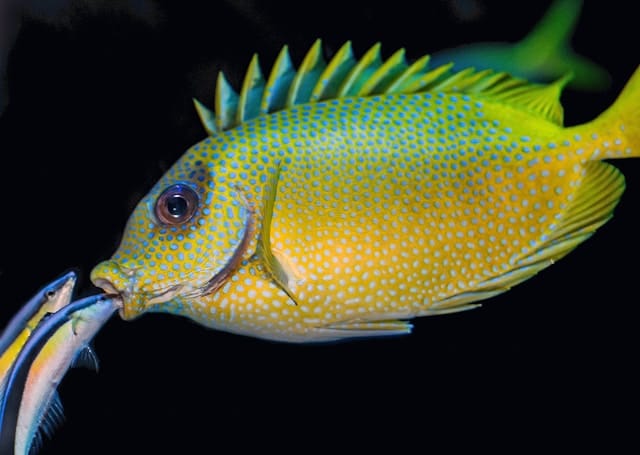How Can You Tell if Your Aquarium Plants Are Adequately Providing Oxygen for Your Fish?

Aquarium owners often face the crucial responsibility of maintaining a healthy balance of oxygen levels in their tanks. Aquatic plants play a pivotal role in the aeration process, providing much-needed oxygen for the fish. But how can you, as an aquarist, determine if your plants are adequately supplying oxygen? This article will delve into the signs indicating oxygen production in your aquarium, the role of aquatic plants and fish, and how to maintain optimal oxygen levels for a thriving underwater habitat.
The Role of Aquatic Plants in Oxygen Production
Aquatic plants, often referred to as the lungs of your aquarium, are responsible for the oxygenation process. Through photosynthesis, these plants absorb carbon dioxide (a waste product from fish respiration) and convert it into oxygen. This not only maintains a healthy oxygen level in your tank but also keeps the water clear, promotes fish health, and provides a visually appealing environment.
Also to see : How to Choose and Set Up the Ideal Habitat for a Crested Gecko?
To determine whether your plants are sufficiently providing oxygen, you can observe their health and behavior. A healthy plant will display vibrant colors and robust growth. If your plants are shedding leaves, exhibiting dull colors, or showing signs of disease, they might not be photosynthesizing effectively.
Another telltale sign is the presence of oxygen bubbles on the plant leaves or the water surface. These bubbles, known as pearling, indicate that your plants are photosynthesizing vigorously, producing excess oxygen that forms visible bubbles.
Additional reading : What Are the Best Exercise Routines for a Dog Breed Prone to Elbow Dysplasia?
Interplay Between Fish and Aquatic Plants
Understanding the balance between your fish and aquatic plants is key to maintaining optimal oxygen levels. Both parties contribute to the tank’s oxygen and carbon dioxide levels, maintaining a balance that is essential for their survival.
Fish consume oxygen and produce carbon dioxide through respiration. Correspondingly, plants absorb the carbon dioxide and convert it into oxygen. If the plants are not producing enough oxygen, the fish may show signs of distress, such as gasping at the water surface, lethargy, or reduced feeding. It is essential to keep an eye on your fish’s behavior as it serves as a reliable indicator of oxygen levels in the aquarium.
But remember, too many fish can lead to an accumulation of carbon dioxide, overloading the plants’ capacity to absorb and convert it to oxygen. If you notice any signs of distress in your fish, consider reducing the fish population or increasing your planted species to re-establish balance.
Aquarium Aeration and Its Importance
Besides plants, aeration plays a vital role in maintaining the oxygen levels in your aquarium. The exchange of gases happens at the water surface. Thus, increasing the surface area or agitating the surface enhances this process.
An air pump or a water filter can be used to enhance aeration. The air pump pushes air into the tank, creating bubbles that increase the surface area for oxygen exchange. A water filter, on the other hand, agitates the water surface, promoting oxygen diffusion.
A properly aerated tank will show signs of healthy fish and plants. However, lack of sufficient aeration may manifest in several ways such as fish gasping for air, sluggishness of fish, poor plant growth, or an unpleasant smell from the water.
Maintaining Optimal Oxygen Levels in Your Aquarium
Maintaining optimal oxygen levels is essential for the health of your aquarium’s inhabitants. There are several strategies that you can adopt.
First, ensure a balanced aquarium population. Too many fish or plants can disrupt the balance of gases. Secondly, equip your tank with an air pump or a water filter for enhanced aeration. Lastly, regular water changes can be beneficial. Old water may contain high levels of waste products that affect oxygen availability, so replace a portion of it with fresh, dechlorinated water regularly.
Monitoring the oxygen levels in your tank is not a daunting task, rather a crucial one. An oxygen test kit can be a handy tool in this regard. It provides accurate readings of the oxygen concentration, thereby allowing you to make necessary adjustments promptly.
In conclusion, maintaining a balanced ecosystem in your aquarium requires diligence and observation. By understanding the roles of your fish, plants, and aeration devices, you can ensure a healthy and vibrant aquarium.
Understanding the Process of Photosynthesis in Your Aquarium
Photosynthesis is a crucial process in which aquarium plants convert carbon dioxide and light into oxygen and glucose. Healthy, vibrant plants are efficient photosynthesis machines where oxygen is a byproduct. The process is important because it helps maintain vital oxygen levels, facilitating a conducive environment for your fish.
Your planted tank is not just a visual treat; it’s a functional, breathing system. Light, carbon dioxide and water are absorbed by the plants during the day. With the help of chlorophyll, these ingredients are mixed to produce glucose and oxygen. The energy for this comes from light, either natural or artificial. The oxygen produced is then released into your tank water, providing the much-needed oxygen for your aquarium fish.
During the night, however, the process is reversed. The live plants start consuming oxygen and producing carbon dioxide. This is because photosynthesis cannot occur without light. Therefore, it is important to maintain a balance in your tank, ensuring your fish have sufficient oxygen during night time.
You can achieve this by using an air pump to enhance gas exchange when the lights are off. An air pump will help maintain dissolved oxygen levels in the aquarium water, ensuring your fish are not deprived of oxygen. Additionally, surface agitation from the air pump aids in releasing excess carbon dioxide, promoting a healthier environment for your fish.
The Effect of Aquarium Temperature on Oxygen Levels
Temperature plays a significant role in determining the oxygen levels in your freshwater aquarium. Cold water can hold more dissolved oxygen than warm water. Thus, if your tank water is too warm, it may not contain adequate oxygen, causing distress to your fish.
Oxygen is less soluble in warm water, which decreases the amount of available oxygen for your fish. On the contrast, cooler water increases the solubility of oxygen, allowing more oxygen to be dissolved and available for your fish. It’s essential to keep the temperature of your aquarium within the ideal range for your specific fish species.
An increase in temperature, even a slight one, can drastically reduce the oxygen levels while increasing the metabolic rate of your fish. This results in increased oxygen demand by the fish, creating a situation that could lead to oxygen deprivation. To avoid this, you can use an aquarium cooler or reduce the lighting duration in your tank, especially during the warm months.
Conclusion
Ensuring adequate oxygen supply in your aquarium is a combination of maintaining healthy aquatic plants, a balanced number of fish, and proper gas exchange mechanisms. Regular monitoring helps in identifying any changes in your plants or fish behavior, which could be indicative of oxygen levels in the tank.
Maintaining the right temperature in your aquarium also plays a crucial role in ensuring comfortable levels of dissolved oxygen. Remember, a well-oxygenated tank results in healthier, vibrant fish and lush, thriving plants. With the right care and attention, you can maintain a thriving underwater world for your fish to enjoy, while treating yourself to the peace and tranquility that an aquarium brings. By understanding the unique interplay between the fish, plants, and elements in your aquarium, you can ensure a balanced, lively, and healthy environment in your tank.
